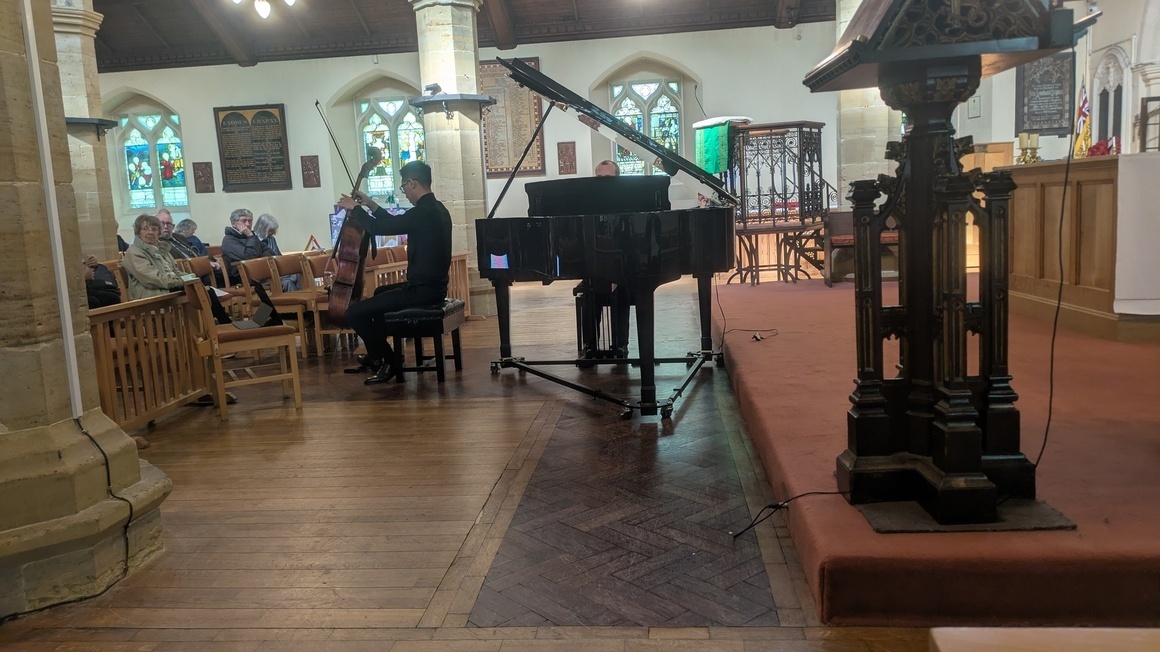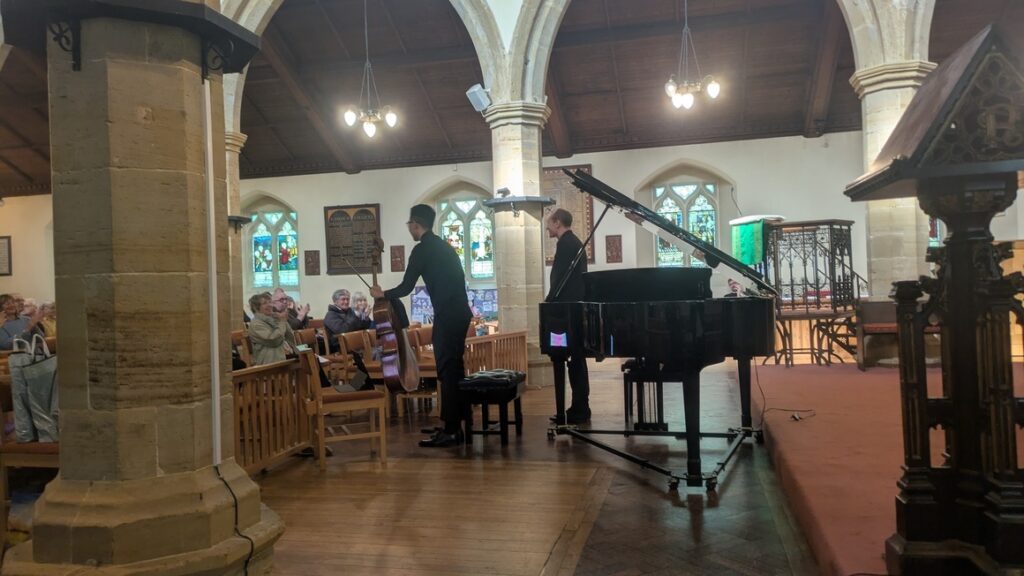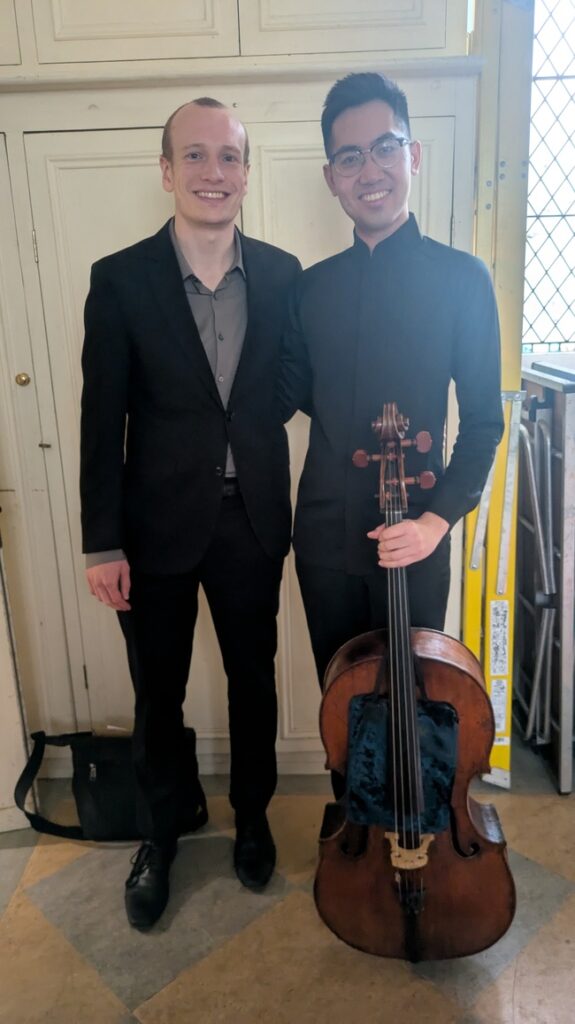Review by Simon Jenner, September 24 2025
*****
St Nicholas welcomes two international soloists – Jason Ma and Seth Schultheis – who play around the world in renowned ensembles and together.
Offering Brahms’ Cello Sonata No 1 in E minor Op 38 from around 1863, and Frank Bridge’s Sonata in D minor which morphed between 1913-17 as Bridge underwent a transformation as composer.
Educated at Cleveland Institute of Music, cellist Jason Ma joins Royal Academy of Music educated pianist Seth Schultheis. Their pedigree is immediately evident. Their Brahms is rich toned and shadowed in the best sense. Ma offers a strong contrast of chiaroscuro and angst in the first movement, and a silvery feel with the scherzo of the second. This enjoys the darkly playful and the mildly sardonic. Ma and Schultheis bring out it’s intended light ironies, and a certain heavy humour rendered lightly.
It’s Schultheis who brings out the emphatic in the finale’s piano part and becomes the dominant partner for a long stretch. The fugatos and other figures blaze in an acoustic that here seems to favour the piano. Nevertheless Ma holds his own and pushes a gleaming expressiveness right through to the last bars. Both a thrilling and infinitely satisfying performance.
The Bridge from 50 years later is a work that in its two movements reflected Bridge’s accelerated development during the First World War. The opening rhapsodic first movement is a recognizable relation to contemporaries Ireland and Bax. It’s already moved from his teacher Stanford’s school of wonderful melodies but slightly salon-cut limitations, suffused as it happens with Brahms. Here the chromaticism is already advanced. Though elements of Delius and Debussy-like impressionism shade the corners, there’s recognizably a Bridge melody – Bridge was a melodist of genius amongst other things – and Ma darts above the line in a rhapsodic twist as Schultheis crafts chimes and glissandi at one point. It ends in a pizzicato and fermata. Beautifully detailed and expressively rich in a way I’ve not heard before in this work.
The second movement from four years on is deeply disturbed, and the opening piano statement an expression of Bridge’s later piano music. Ma answers with an etiolated line that dies out. The new tone is close to Berg’s Piano Sonata of 1908. Indeed Bridge’s String Quartet No 3 was premiered in Vienna in 1926 alongside Berg’s Lyric Suite.
There’s more interplay, bleak air and light. The piano chords are widely spaced, even spiky, more chromatic and prelude the pointillist style of Bridge’s piano sound from 1918 onwards. The piano reverts to a shadowy scurrying as the cello soars above and is suddenly left hanging. Only then do more consolatory chords intervene. But we are in a new desolate war-torn world. That of the first movement is gone forever. Again the instruments alternate in a kind of threnody. Ma and Schultheis are wholly inside this music, unafraid to certainly tear the quiet sonance open when called for. And drop. It’s devastating and true to this work. We’re unlikely to hear a finer performance any time soon. If ever. A recital both unusually exhilarating and wholly satisfying.
Photo Credit Simon Jenner




